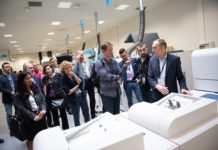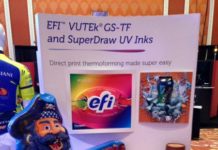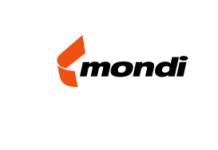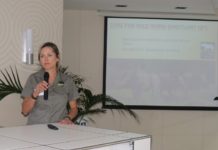Konica Minolta South Africa's support of the World Wildlife Funds (WWF) rhino conservation programme is enabling RhODIS (Rhino DNA Index System) to expand its reach into Botswana, Zimbabwe, Kenya and Namibia, and now India has expressed interest in this rhino DNA database too.
The company took press members to the Ondersterpoort Veterinary Genetics Laboratory at the University of Pretoria on 17 April, where they saw the process of DNA sample collection. RhODIS is a rhino DNA database that is used as a tool to protect the rhino and is similar to the Combined DNA Index System (CODIS), which the FBI uses. The DNA profiles are obtained directly from the rhino horn. The database has DNA profiles from rhino from national and provincial parks and private owners in South Africa; DNA profiles from all poaching cases; profiles from recovered horns and stockpile horns and profiles from rhinos from Zimbabwe, Botswana, Kenya and Namibia.
Various representatives from Konica Minolta South Africa also attended the event to get an overview of the process so that they can give authoritative information of the process to their customers, as well as to see how the company's efforts are contributing to rhino conservation.
'Konica Minolta South Africa saw an opportunity in this wildlife project, which needed funding. The buy-in we've got from our own organisation, our dealer family and customers at large has been phenomenal. It's turned out to be a great success for us,' said the company’s MD, Alan Griffith.
Dr Joseph Okori, head of WWF's African Rhino Programme, said that India has expressed interest in the RhODIS system. 'A delegation from India visited the Ondersterpoort laboratory and felt that the system should be promoted in Asia. We're seeing the ripple effect beyond the African continent because of the effort that Dr Harper and her team and Konica Minolta South Africa has put into this system.'
He added that the president of Botswana wants to see that rhinos in Botswana are secured and has taken positive interest in ensuring that the department of wildlife in Botswana plays an active role in securing the population of rhinos by collaborating with South Africa and sampling the entire population to ensure that rhinos in Botswana are fully traceable.
Dr Okori highlighted achievements that are due to Konica Minolta South Africa's support:
-The RhODIS system is now fully ascribed as law in South Africa, meaning that profiles can be used as evidence in poaching cases.
– Kenya has agreed to get its entire rhino population onto the system. The Kenyan government has also formally approved that the system be ascribed as law.
'Decisions have been made by governments through this engagement between South Africa and Kenya. This wouldn't have been possible without Konica Minolta South Africas support,' said Dr Okori.
The RhODIS database currently consists of 4500 samples. These DNA profiles serve as a traceability tool and horn identification method, so the profiling is a forensic tool to assist rhino poaching investigations. Profiles can be used as evidence in poaching cases, as the horn, which has been seized or recovered, can be traced back to the poached rhino, linking the poachers to the rhino. The laboratory also uses other evidence such as knives, pangas and other evidence from poaching cases.
As little as 20mg of rhino horn can be obtained as DNA, making it a very powerful traceability tool. As a bonus, the system can also be used to manage animals genetically so that owners know which bull is fathering their calves, etc.
Dr Cindy Harper, Director of the Ondersterpoort Veterinary Genetics Laboratory at the University of Pretoria, started doing DNA profiling from rhino horn, which hadn't been done previously, two years ago. A person who knew about the DNA profiling told a representative from the Hawks about Dr Harper's work. Hawks representatives then brought samples from recovered rhino horn that a criminal had tried to smuggle out of OR Tambo airport to the laboratory, which matched the sample back to a poached carcass. The Vietnamese smuggler received a 10 year presence sentence.
'Above and beyond the database, the laboratory has also developed DNA sample collection kits, particularly for poaching cases, as a system was needed that stands up in court so that one can say what happened to the samples: from where they were collected to the report that was generated. The laboratory developed these kits that go out in a sealed evidence bag. Everything inside the bags is DNA-free, pre-packed and pre-labelled and there are instructions in the kit so people know exactly what to do. People then collect the samples and put everything in a second sealed evidence bag, which comes back to the laboratory. This gives you full chain of custody and serves as evidence that can be used in court. With the help of SanParks and the National Crime Reaction Unit, we got together and worked out what the police would use in their system so we could make ours similar,' said Dr Harper.
'If you want to legislate something, you have to ensure that there are people trained to enforce it. We've done this together with the police and environmental management inspectorate and have trained some veterinarians and prosecutors about the process of collecting the samples properly. So far, we've done certification courses for over 100 participants from these various sectors.
'We started doing the profiling because we wanted to make a difference to the rhino species. The system is making a difference and that has motivated me to continue doing this. Weve seen how rhino mothers take on helicopters and vehicles to protect their calves. These animals are not just things you take photographs of, they have a strong social and emotional connection to each other.'





















